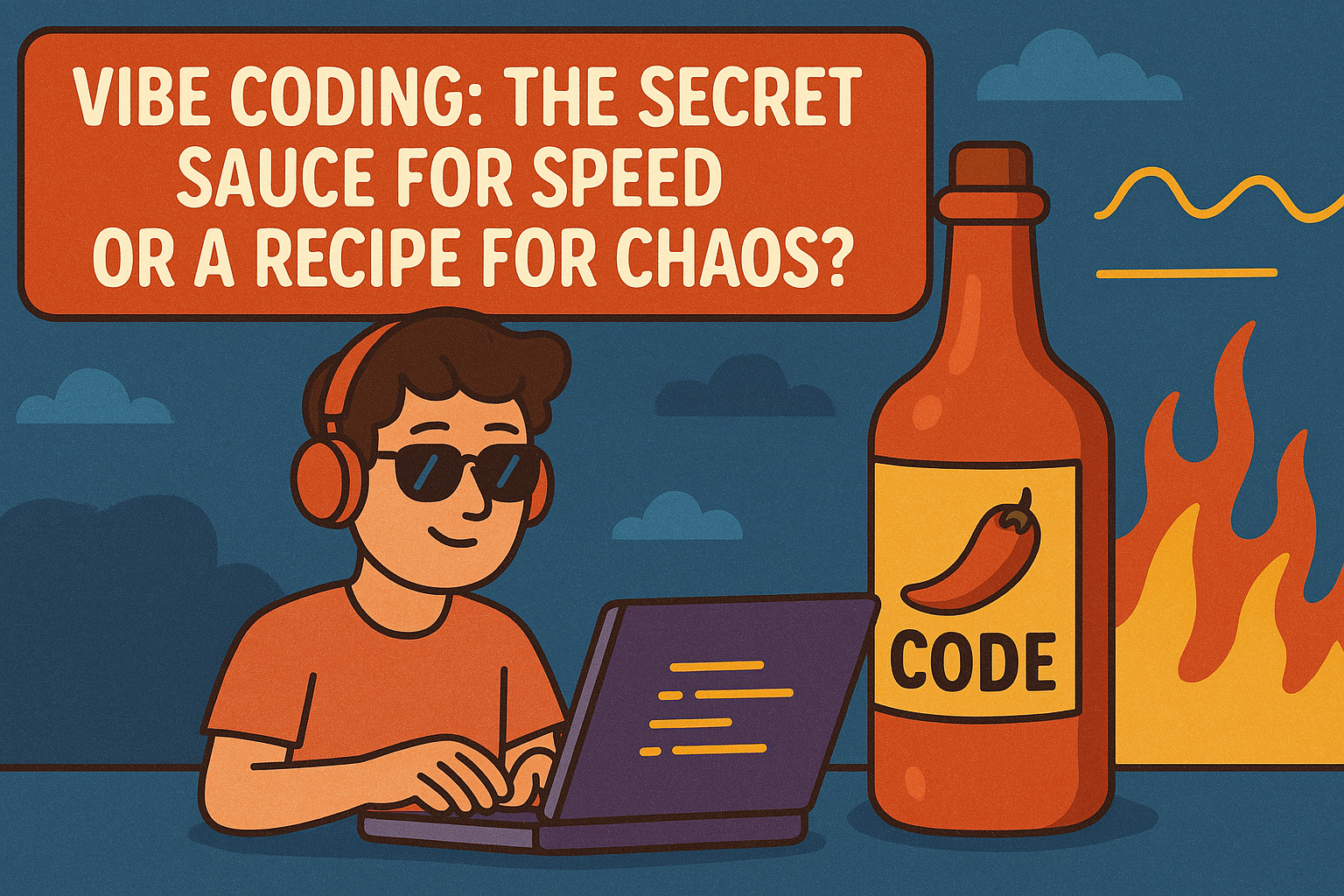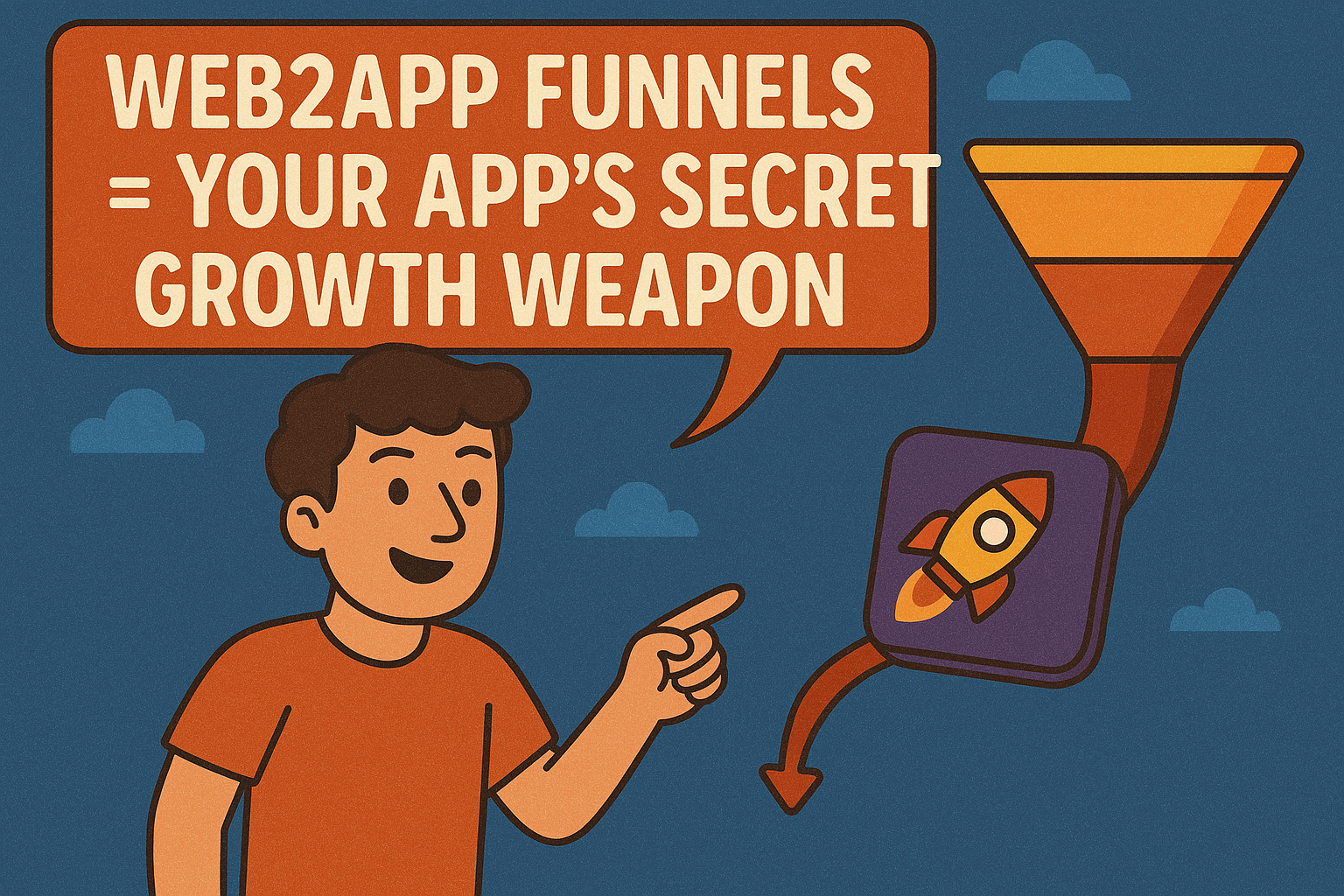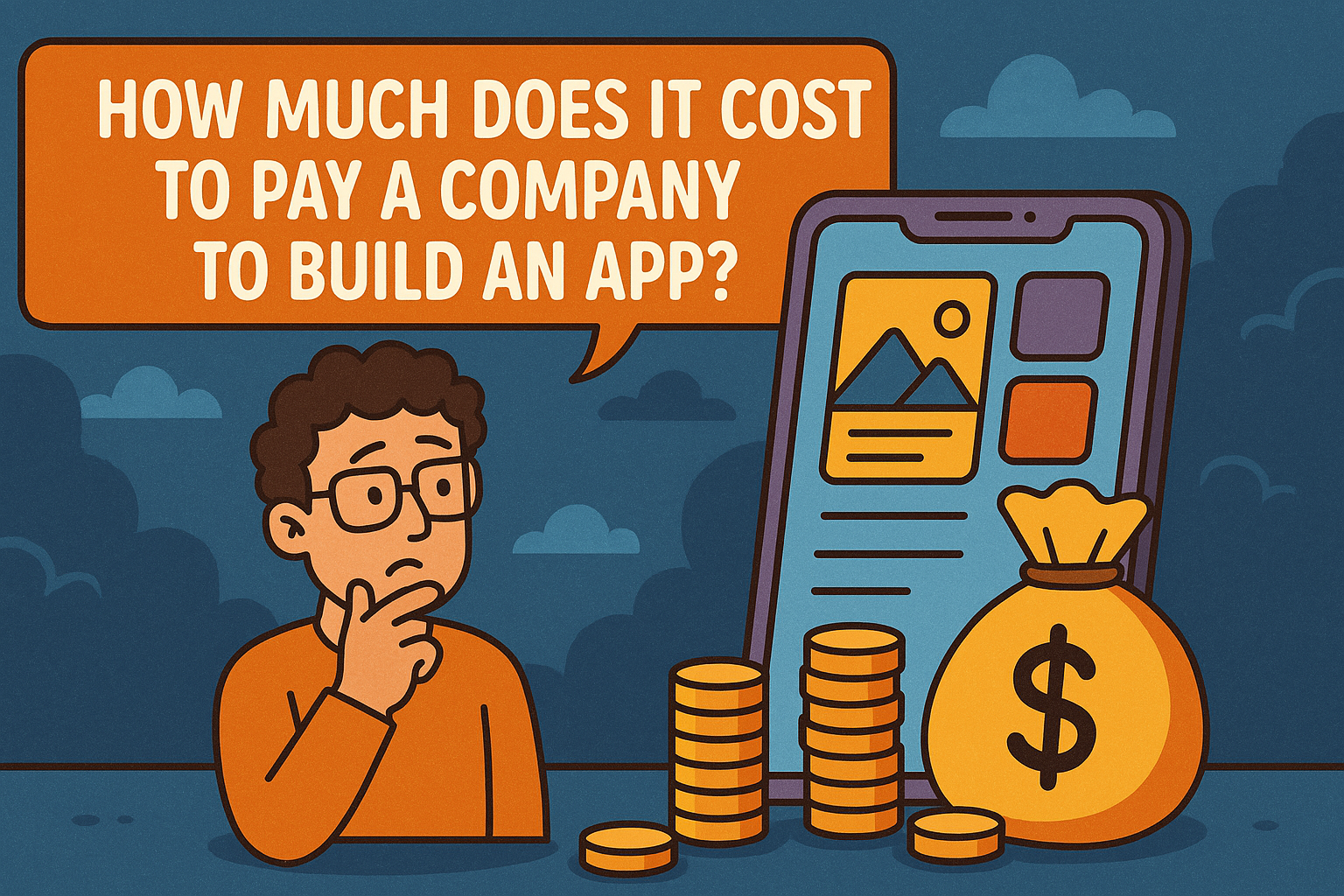You might have heard the term whispered in developer circles, seen it pop up on social media, or perhaps even practiced it without knowing the name: Vibe Coding. Unlike formal methodologies like Agile or Waterfall, “Vibe Coding” isn’t found in software engineering textbooks. It’s a more colloquial, developer-culture term describing a particular approach to writing code.
But what does it actually mean? Is it a legitimate technique, a recipe for disaster, or something in between? Let’s dive deep into the world of Vibe Coding, exploring its definition, characteristics, benefits, drawbacks, and how it fits (or doesn’t) into professional software development.
Defining “Vibe Coding”: It’s a Feeling
At its core, Vibe Coding refers to writing code based primarily on intuition, gut feeling, flow state, and the overall “vibe” of the moment, rather than strictly adhering to pre-defined plans, rigid specifications, or established patterns in that instant.
Think of it like a jazz musician improvising versus a classical musician strictly following sheet music. The vibe coder “feels” their way through the problem, letting the solution emerge organically as they type. It often involves:
- Intuition-Driven Decisions: Making choices about logic, structure, or variable names based on what “feels right” or seems elegant at the moment.
- Entering a Flow State: Becoming deeply immersed in the code, often losing track of time, and letting the code guide the next steps.
- Minimal Upfront Planning (Sometimes): In its purest (and perhaps most dangerous) form, it might involve jumping straight into coding without detailed diagrams, pseudocode, or comprehensive task breakdowns.
- Focus on Immediate Feedback: Writing code, seeing if it works or “feels” correct, and adjusting iteratively based on that immediate feedback loop.
- Aesthetic and Environmental Influence: Sometimes, the developer’s environment – music, lighting, time of day, even the type of keyboard – contributes to the “vibe” that facilitates this coding style.
It’s crucial to understand that Vibe Coding isn’t a formal methodology. It’s a description of a way some developers work, particularly during certain phases or on specific types of projects.
Who Coined “Vibe Coding”? The AI Connection
While the feeling of coding based on intuition has likely existed as long as coding itself, the specific term “Vibe Coding” gained significant traction very recently, particularly in the context of AI-assisted development.
The term is widely credited to Andrej Karpathy, a prominent AI researcher, co-founder of OpenAI, and former head of AI at Tesla. In early February 2025, Karpathy posted on X (formerly Twitter) describing a “new kind of coding” he called “vibe coding”. His definition was specifically tied to using powerful Large Language Models (LLMs) like Claude Sonnet (via tools like Cursor) to generate code based on natural language prompts.
In his original post, Karpathy described it as a process where you “fully give in to the vibes, embrace exponentials, and forget that the code even exists” because the AI tools are becoming so proficient. He mentioned barely touching the keyboard, accepting AI suggestions without deep scrutiny (“Accept All” always, not reading diffs), and pasting error messages back into the AI for fixes. He characterized it as amusing and suitable for “throwaway weekend projects,” acknowledging that the code can grow beyond easy comprehension and bugs might need workarounds rather than direct fixes.
So, while the blog post you’re reading discusses “vibe coding” in the broader sense of intuition-driven development as well as the AI-assisted context, the term itself was popularized by Karpathy specifically referring to this AI-heavy, less hands-on approach. Since Karpathy’s post, the term has exploded in popularity, featuring in numerous tech articles and discussions, sometimes used more broadly than his original AI-centric definition.
Characteristics of Vibe Coding in Action
How can you spot vibe coding (or recognize it in yourself)?
- “I’ll know it when I see it”: Instead of designing the perfect structure upfront, the developer explores different approaches, trusting their intuition to recognize the best path as it appears.
- Refactoring Driven by “Code Smell”: Changes are often made not because a formal rule was broken, but because a piece of code just “feels” wrong, clunky, or overly complicated.
- Rapid Prototyping: Quickly sketching out ideas in code to see if they work or feel viable, without necessarily worrying about long-term maintainability initially. This aligns closely with Karpathy’s AI-assisted definition.
- Debugging by “Feel” (or AI): Having a hunch about where a bug might be (traditional vibe) or simply feeding the error message back to an AI (Karpathy’s vibe).
- Emphasis on Flow: Prioritizing uninterrupted blocks of time to get “in the zone” where intuitive connections happen more easily.
- Potentially Less Documentation / Code Review (Initially): The logic might reside more in the developer’s head (traditional) or be implicitly trusted to the AI (Karpathy’s definition), potentially delaying or skipping documentation and rigorous review.
Where Does Vibe Coding Shine? The Pros & Use Cases
Despite its informal nature and the risks associated with the AI-heavy version, Vibe Coding isn’t inherently bad. It can be highly effective in certain contexts:
- Early-Stage Prototyping & Exploration: Whether human-driven intuition or AI generation, vibe coding allows for rapid iteration to test ideas quickly. Karpathy specifically highlighted its use for “throwaway weekend projects.”
- Creative Coding & Artistic Projects: In fields like generative art or game jams, coding based on feel and letting the AI take unexpected turns can lead to more interesting results.
- Small Personal Projects: When working alone without strict external requirements, vibe coding (human or AI-assisted) can be fast and enjoyable.
- Experienced Developers’ Intuition: Senior developers’ “vibes” are often highly informed. They might use intuition for quick implementations or guide AI tools more effectively based on their deep knowledge.
- Breaking Through Debugging Blocks: An intuitive leap or letting an AI try random fixes (as Karpathy described) can sometimes resolve stubborn issues, though the latter lacks understanding.
- Democratizing Simple Software Creation: As Karpathy’s definition implies, AI-driven vibe coding allows people with little traditional coding skill to generate functional software snippets or simple apps by describing their needs in natural language.
The Potential Pitfalls: When the Vibe Turns Bad
However, relying solely or heavily on Vibe Coding, especially in the “trust the AI completely” sense described by Karpathy, carries significant risks, particularly in professional or team environments:
- Scalability & Maintainability Issues: Intuitive or AI-generated code might work initially but be hard to scale, maintain, or integrate. The lack of deep understanding inherent in Karpathy’s definition exacerbates this.
- Team Collaboration Challenges: Code written purely on one person’s “vibe” (human or AI) can be opaque to others. This is a major drawback of not reading or understanding the generated code.
- Inconsistency and Bugs: Intuition isn’t infallible, and AI models definitely aren’t. Skipping review and testing, as suggested in the extreme “vibe coding” approach, guarantees bugs, edge cases, and potential security flaws will slip through.
- Lack of Understanding & Documentation: If the logic is purely intuitive or generated by an AI without review, it’s incredibly difficult to debug, modify, or transfer ownership later. This is a core tenet of Karpathy’s initial description and a major risk.
- Onboarding Difficulties: New team members face a steep climb understanding a codebase built on unreviewed AI generation or undocumented human intuition.
- It Doesn’t Replace Engineering Discipline: Vibe coding cannot substitute for requirements analysis, robust testing, security reviews, code reviews, and proper architecture – essentials for reliable software. Karpathy himself noted its limitations beyond simple projects.
- “Rabbit Hole” Risk: Exploratory coding (human or AI-guided) can lead down time-consuming, unproductive paths.
Vibe Coding vs. Formal Methodologies: Finding the Balance
It’s crucial to position Vibe Coding correctly. It is not a replacement for Agile, Scrum, Waterfall, or any formal SDLC. Instead, think of it as:
- A Potential Input: Intuition or AI suggestions can feed into planning or exploration within a structured framework.
- A Tool for Specific Tasks: It might be the approach for a specific task (prototyping, exploring an API), but within a larger, disciplined project structure. AI-assisted vibe coding is particularly suited for rapid prototyping.
- A Personal Style Element: Some developers lean more on intuition, others are more methodical. Effective developers and teams blend these, using AI as a tool, not a replacement for understanding.
The most effective developers learn to harness their intuition and leverage AI tools, while grounding both in solid engineering principles. They might let a “vibe” or an AI prompt guide them, but then they rigorously test, understand, document, refactor, and ensure the result aligns with project goals. They use intuition and AI as accelerators and idea generators, not as substitutes for critical thinking and quality assurance. As AI researcher Simon Willison noted, if you use an LLM but review, test, and understand the code, “that’s not vibe coding… that’s using an LLM as a typing assistant.” The key differentiator in Karpathy’s “vibe coding” is the potential lack of understanding and review.
Is “Vibe Coding” Just… Normal Coding for Experienced Devs (or AI Prompting)?
Experienced developers often internalize patterns, making their “gut feelings” highly informed. In this sense, traditional “vibe coding” is often experience manifesting as intuition.
Karpathy’s definition, however, introduces a different angle: coding without necessarily needing deep experience or even understanding the output, relying instead on the AI’s capability and natural language interaction. This lowers the barrier to producing code but doesn’t automatically equate to engineering software.
Conclusion: Embrace the Vibe, But Ground It in Craft
Vibe Coding, whether driven by human intuition or amplified by AI, describes a real phenomenon. The intuitive, flow-driven process can be powerful for creativity and speed. The AI-assisted version, as popularized by Andrej Karpathy, dramatically lowers the barrier to generating code, enabling rapid prototyping and empowering non-coders in new ways.
However, it’s not a silver bullet. Relying purely on vibes – especially the AI-centric version that involves minimal review and understanding – is risky for anything beyond simple or disposable projects. It cannot replace the discipline, rigor, and understanding required for building robust, maintainable, and secure software.
The art lies in finding the balance. Cultivate your developer intuition. Leverage powerful AI tools to accelerate workflows and explore ideas. But always validate feelings and AI outputs with testing, critical review, clear communication, thoughtful design, and collaboration. Use the vibe and the AI to assist the journey, but use engineering discipline to ensure you arrive at a quality destination.
So, the next time you find yourself “vibe coding,” enjoy the flow, leverage the tools, but remember to step back and ensure your creation meets the necessary standards of quality, understanding, and collaboration.


